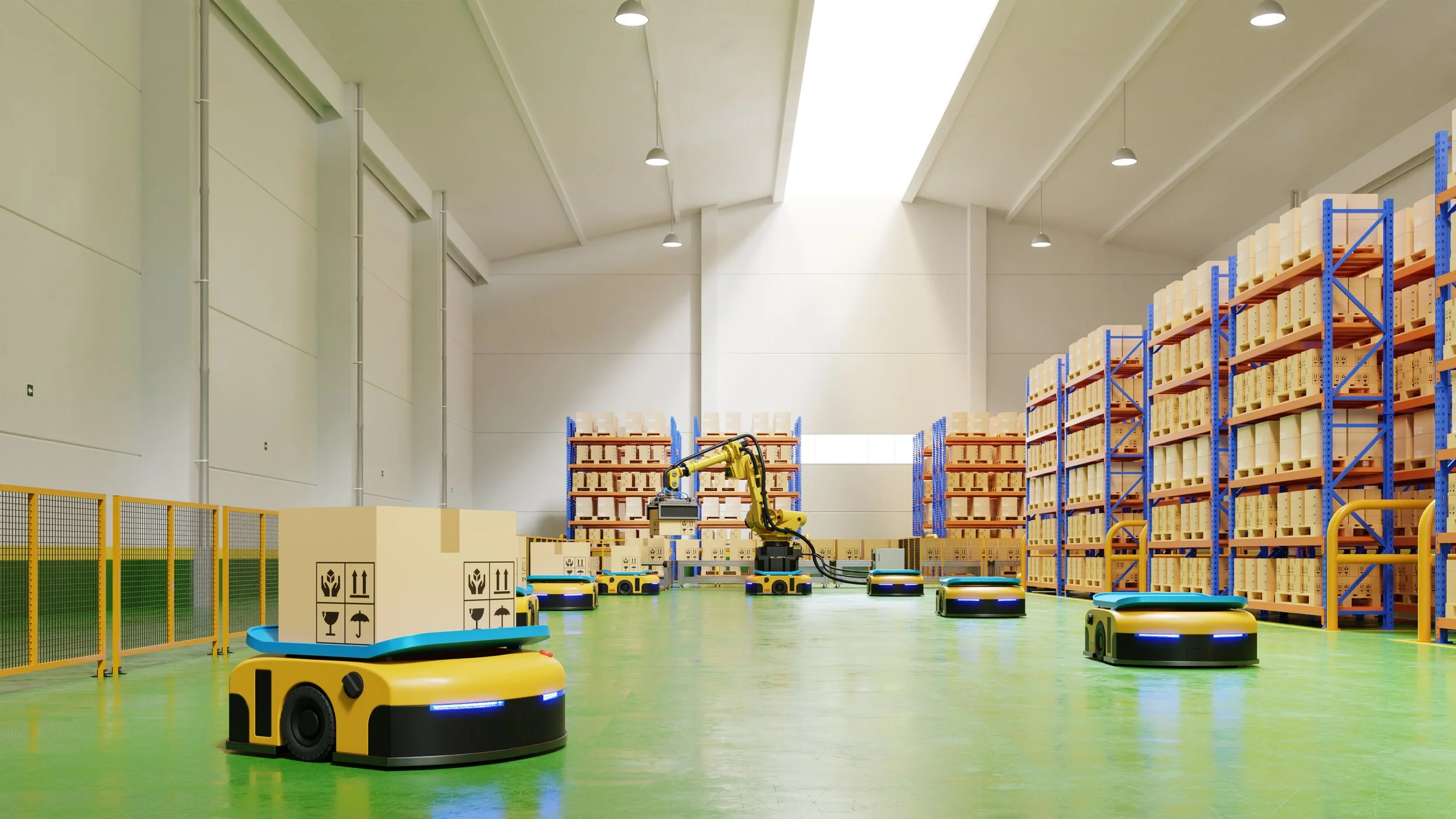Is Your Warehouse Ready for Automation?
One powerful solution for warehouses looking to improve efficiency and remain competitive is automation. But you may be wondering: How do I know if my warehouse is ready for automation? Below, Quintec Conveyor shares a comprehensive checklist to help you evaluate your operations and determine when warehouse automation is the right next step for your business.
What is Warehouse Automation?
Warehouse automation refers to the implementation of technology that automates various tasks and processes within the warehouse. These systems can include robotics, automated conveyor belts, inventory management software, and more.
Automated warehouse processes reduce the need for manual labor in areas like receiving, sorting, packing, and shipping—resulting in greater accuracy, speed, and overall productivity. While automation has benefits for many types of facilities, there are key indicators that can help determine when it's the right time to make the move.
How to Determine If Warehouse Automation is Right for Your Business
Evaluate Your Current Operations with a Process Analysis
The first step is evaluating how your current systems are performing. If your facility is managing a high volume of orders—especially within picking, packing, and shipping workflows—manual processes may no longer be sustainable. Errors and inefficiencies tend to rise as demand increases.
Determine which areas would benefit most from automation. Focus on processes that impact multiple areas of the operation, and look for opportunities to improve accuracy, speed, and labor utilization.
Experiencing frequent stockouts, overstock issues, or inventory discrepancies? These challenges may be resolved with automation solutions that track and manage inventory in real time. And if labor shortages or rising labor costs are affecting productivity, technologies like Autonomous Mobile Robots (AMRs) can help fill in the gaps or reallocate labor to higher-value tasks.
Target Growth and Expansion Needs
As demand grows, some warehouses struggle to scale efficiently. Automation offers scalable solutions that can flex with seasonal fluctuations and long-term expansion goals. By improving throughput, automated systems help warehouses process more orders in less time—while maintaining accuracy and consistency.
If your warehouse is already feeling the pressure or you’re planning for future growth, automation can be the key to meeting customer expectations while maintaining operational control.
Examine Infrastructure and Technology Readiness
Not all facilities are immediately ready for large-scale automation. Consider your current warehouse layout—can it accommodate systems like Automated Storage and Retrieval Systems (AS/RS) or AMRs? You may need to reconfigure your layout to take full advantage of automation.
It’s also critical to evaluate your Warehouse Management System (WMS). Does your current system support integration with automation technologies? If your WMS is outdated or incompatible, upgrading it may be necessary before implementation.
If you're unsure how to approach system integration or facility optimization, the team at Quintec Conveyor can provide a comprehensive workflow and warehouse assessment to guide your automation journey.
Determine ROI and Budget
Warehouse automation is a significant investment, so calculating your return on investment (ROI) is key. Be sure to consider not only equipment and software costs, but also installation, maintenance, and employee training.
Many businesses that invest in automation see ROI in as little as 18 months. To get started, consider running a pilot program to introduce automation in a specific area. This approach allows your team to experience the benefits firsthand and ensures a smoother transition.
Prepare Your Workforce for the Transition
Automation isn't about replacing employees—it’s about empowering them to do more meaningful work. By taking over repetitive or physically demanding tasks, automation creates opportunities for employees to focus on value-added responsibilities that require critical thinking.
Your workforce’s readiness to adapt is crucial. Training, communication, and leadership are key elements of successful adoption. If you anticipate resistance, a pilot program can help ease the transition and build confidence. A trusted partner like Quintec Conveyor will also support staff training to ensure smooth onboarding of new technologies.
✅ Final Checklist for Automation Readiness
Use this quick checklist to help evaluate your warehouse’s readiness for automation:
Do you handle high volumes of complex orders?
Are labor shortages or costs affecting productivity?
Do you experience inventory accuracy challenges?
Is your warehouse layout suitable for automation systems?
Can your WMS integrate with new technologies?
Have you calculated the potential ROI for automation?
Is your workforce ready to adapt through proper training?
If you answered “yes” to several of these questions, your warehouse is likely ready for automation.
Final Thoughts from Quintec Conveyor
Warehouse automation has the potential to transform your operations—boosting efficiency, accuracy, and employee satisfaction. By evaluating your current processes, growth plans, infrastructure, and workforce readiness, you can make a smart, informed decision about automation.
Ready to take the next step? Reach out to Quintec Conveyor today to schedule a full workflow assessment and learn how our tailored automation solutions can help future-proof your warehouse.



